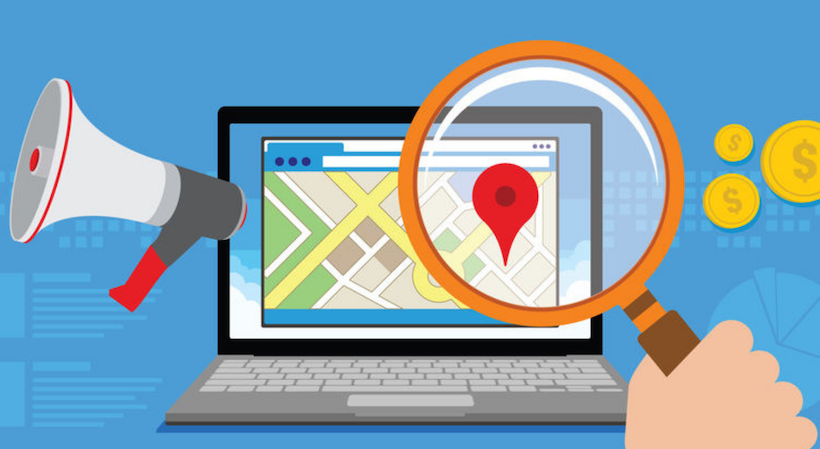Today, more customers are online than ever before and they’re taking the digital approach in finding what they need, from ordering food and clothes to getting groceries. Data shows that 46% of these online searches are local, and almost 50% of online users have the intention of visiting physical stores of the businesses they’re looking for. This means consumers are going online first to look for information before heading to the store. How will your website show up in these online searches for your local area? This is where local search marketing and local SEO comes in.
StartupNation exclusive discounts and savings on Dell products and accessories: Learn more here
Here’s what you need to know about local search marketing and local SEO:
Local search marketing
Local search has the same dynamics as organic search. The only difference is that you’re targeting a local audience. You’re focused on an audience in a specific geographical area that will likely make direct contact with your business and become foot traffic.
In the past three years, the usage for keywords “where to buy” and “near me” have grown by over 200%, and that’s only on mobile devices. More and more people are using the web to reach physical establishments.
For example, let’s say you run a local toy store, and a consumer nearby needs to purchase a toy for their child’s birthday. He or she will likely go online to locate a toy store near him or her and then follow the information to reach any one of those businesses listed in the results.
The next question is: how do you compete with all of the businesses in your area?
You need to make sure you’re doing everything to successfully promote your establishment online and be the first one to show up when a user types in any search related to your industry.
Enter local search marketing, which is any activity you do online to promote your offline store. It’s applicable to all kinds of businesses in any industry, whether you’re operating a small business in a single location or multiple locations.
Related: How SEO Can Help You Future-Proof Your Startup
Mobile search and foot traffic
Google research shows that 83% of U.S. shoppers who visited a store in a week used online search before going to the store. What’s more interesting is that 55% of shoppers said they watched online videos while actually shopping in the store.
Today’s shoppers are more technologically savvy than ever before, and the web has been a catalyst in changing traditional retail business operations and buyer behavior. If you’re running a business with a physical location, you have to adapt and use this trend to your advantage.
E-commerce has skyrocketed in popularity largely due to the pandemic, but brick-and-mortar retail is still lucrative: The National Retail Federation revealed even with the pandemic outbreak, retail sales in 2020 accounted for $4.06 trillion, a 6.7% increase from 2019.
Retail is still lucrative, but buyer behavior has changed. It’s now a question of how you’re going to stand out online to drive foot traffic to your offline establishment.
How to optimize search marketing for offline sales
Now, thanks to technology and the accessibility of the internet, there are more ways you can use the web and search marketing to increase offline sales than ever before.
Here are some of the most effective ways:
Local SEO
Local SEO is the method of optimizing your site to boost its visibility on local search results. This also enables brands to capitalize on “near me” searches and the like, which will then drive more foot traffic or boost inquiries.
One method that will help you gain traction on Google is through Google My Business (GMB).
GMB is a tool by Google that’s mainly focused on promoting local business owners and their establishments. Through GMB, you can manage your online business information that will make it easier for local customers (or any user looking for a product or service in a specific area) to find you.
Imagine you’re meeting a friend for lunch, and you want to find available restaurants nearby. Most people would grab their smartphones, Google something like “nearby pizza place” or “restaurant near me” and then choose one of the recommendations. They’ll click it and can either look at the address or choose to be guided by Google Maps.
GMB is also connected to Google Maps. When you search Google for local products or services, you’ll see a list of three local businesses in the results. For example, if you type in “dentist near me,” three local clinics will appear as top searches along with a map of your area with three pins, signifying the locations of those clinics.
Many businesses aim for this position because it’s the first thing people will see when search results appear and gives featured businesses a huge percentage of foot traffic.
Create geo-specific content
The easiest way to optimize for local search is by having a location-specific keyword in your content. There are tools, like Ahrefs Keyword Explorer, to help you check for relevant keywords as well as search volume. For local search purposes, go for the ones with the highest search volume since you’re aiming to be first in your local area.
Now that you have the right keywords, it’s time to localize your website’s content. You have to strategically sprinkle those keywords in your copy, messages and articles. Your targeted keywords should be supported by quality content. This way, Google and search engines will understand the context of the page and recommend it to users. This is why it’s important to create localized content.
Sign Up: Receive the StartupNation newsletter!
Google Ads
Unlike SEO, which can take several months to see results, Google Ads will work instantaneously. You can begin your campaign today and generate sales tomorrow. It’s effective and one of the main reasons Google is now worth more than $630 billion.
Google Ads allow you to get in front of a flood of people in your local area who are already looking for services you’re offering. The advantage of this is you’re already catching local audiences at the exact moment they’re ready to purchase.
Before activating a Google Ad campaign, it’s important to have these three things prepared:
- Landing page, service page or product pages. After clicking the ad, the user will be redirected to a page where they will learn more about your services or products.
- Geo-targeted keywords. Choose keywords that your local market will search for since they will be used to match with your ads.
- Copy and messaging. These will be the messages shown in your ad campaign. Make sure to include geo-targeted keywords but in a subtle and engaging way. Make them eye-catching and easy to understand. Avoid sounding too sales-y, as it can turn off potential customers.
Optimize your images
Compelling visuals are important in creating a lasting impression, and optimized images will help boost your website’s rankings for local search queries, which could potentially lead to increased foot traffic.
You can optimize images for local search by including geo-targeted keywords in the image alt-text. By providing an image with location-based keywords together with keywords that perfectly match the image, search engines can better associate the image with what users are looking for.
Images are important, as they’re responsible for helping a customer make a decision about your products or services. Images can compel a customer to click, which could eventually lead them to your physical store to make a purchase.
Key takeaways: Dominate local search results and boost offline sales
Customer acquisition has evolved and search marketing is a continuous process. Local search marketing and local SEO, along with other methods outlined here, are some of the most effective ways to help you increase offline sales to your business.
Don’t be afraid to experiment and use a variety of tactics. Be open to diversifying your approach, and you’ll see positive results — and sales! — come your way.
Originally published July 28, 2021.






